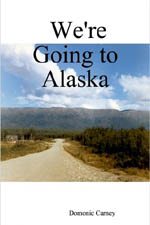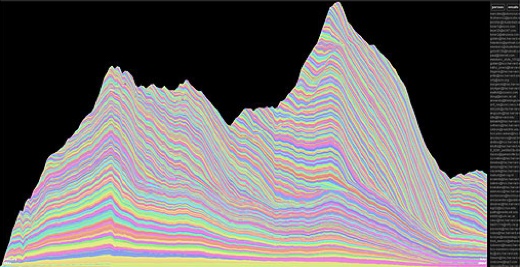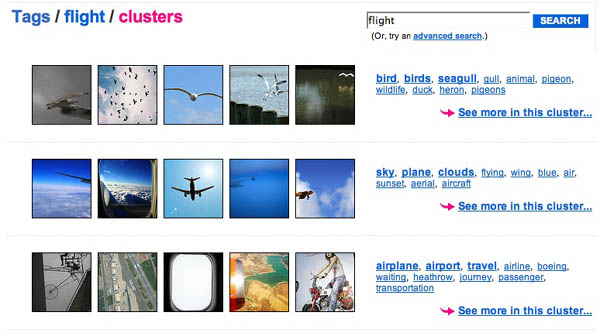CNET News reports that ten schools, including Princeton, the University of Oregon, and the University of Utah, are to participate this fall in a trial program in which college bookstores will offer digital editions of high-demand titles at a 33% mark-down from print prices.  In exchange for these enormous savings, students get to download one, intensely straight-jacketed .pdf file – a book that is readable on only one machine, cannot be printed out in full, and will expire after 150 days.
In exchange for these enormous savings, students get to download one, intensely straight-jacketed .pdf file – a book that is readable on only one machine, cannot be printed out in full, and will expire after 150 days.
Some of America’s biggest textbook publishers, including McGraw-Hill, Houghton Mifflin, John Wiley & Sons, and Thomson Learning are offering digital titles in the program through wholesaler MBS Textbook Exchange. Their aim? To tempt cash-strapped students away from used textbooks, the bane of the textbook industry. All in all, it’s a cynical move that implicitly acknowledges the absurdly inflated price of print textbooks, yet offers only token relief, trying to pass off self-destructing, digital facsimiles as a reasonable substitute for a perfectly durable, slightly dinged used book.
What the textbook publishers ought to be doing is cultivating a more creative vision of the digital textbook, and getting over their terror of online distribution, which they can only see as an intellectual property disaster. Textbook publishers should take a look around and see that there are ways to make good business online. Charge for the service, not the copy – explore syndicated content that students can subscribe to at reasonable rates. Develop new kinds of multimedia titles that can truly take advantage of the online environment. Stop spending millions on digital rights management, stop worrying about your precious copies getting stolen.
On the web, everything is a copy, and it’s pointless trying to police this reality. What’s meaningful is access, what’s meaningful is staying up to date. Develop a good service, with consistently updated, valuable content, and students and professors will buy in. If the textbook industry does not wake up and adapt, they could find themselves in the ash heap. More on that to come.
Monthly Archives: August 2005
e-poetry 2005
E-Poetry 2005, “an international digital poetry festival,” will be held this fall, September 28 through October 1, in London:
E-Poetry 2005 is both a conference and festival, dedicated to showcasing the best talent in digital poetry and poetics from around the world. E-Poetry combines both a high-level academic conference and workshop, examining growing trends in this young and emergent art form, with a festival of the latest and most exciting work from both established and new practitioners.
(via Grand Text Auto)
lulu.com – equal opportunity backlist
lulu.com is an intriguing, just-launched enterprise from open source software pioneer Bob Young (see recent BBC profile) that applies the ebay model of the global online bazaar to print-on-demand publishing. Lulu will host and publish your creative work (text, video, music, photography, whatever) for free. “Lulu is a technology company, not a publisher,” the site makes clear. When somebody purchases a copy, a paperback is spit out of a printer, or a CD or DVD is stamped. The single copy is then packed up and shipped to the buyer.
Authors specify a royalty that they will receive from each sale. All Lulu does is add a modest mark-up to each item, covering the cost of set up, printing and shipping. The rest is profit. For downloads, Lulu doesn’t charge anything above the author’s royalty. Lulu also retains no rights to the work, and has no problem with an author selling their book elsewhere, or even going in and doing an edit of an already listed work. For an extra fee, however, Lulu will help with retail distribution, getting the book listed on Amazon and Barnes & Noble, and giving it a unique ISBN. In this case, Lulu does retain exclusive rights to market your book.
 Usually, it’s the publisher and the retailers that keep most of the money, while the author receives only a tiny fraction. With Lulu, it’s the other way around. And with that reversal goes all the strictures – good and bad – that come with traditional, “elitist” publishing. Authority, prestige, quality control, yes, but also the extreme deficit of imagination and willingness to take risk that plague publishing in the age of mega conglomerates.
Usually, it’s the publisher and the retailers that keep most of the money, while the author receives only a tiny fraction. With Lulu, it’s the other way around. And with that reversal goes all the strictures – good and bad – that come with traditional, “elitist” publishing. Authority, prestige, quality control, yes, but also the extreme deficit of imagination and willingness to take risk that plague publishing in the age of mega conglomerates.
Lulu is like a cattle auction for books. The challenge is not to be “in print” – inexpensive print-on-demand publishing from digital backlists eradicates that concern. Everyone is theoretically in print. Whether anyone wants to read them, however, is a different matter. And so, Lulu is a sort of battleground for the elemental aspirations of creative egos. A writhing mass. The hope is that niche titles will find an audience and that valuable new voices might emerge.
Looking at the Lulu Top 100, you’ll get an idea of what I mean by “niche” titles. At number one (at the time of this writing) is “The Havanese” by Diane Klumb – “the quintessential handbook for Havanese dog owners, breeders and fanciers.” From there on down the list, you’ll encounter such titles as: “Raw Foods for Busy People: Simple and Machine-Free Recipes for Every Day”; “The Best Way to Stay Healthy: Stay as Far Away From Doctors as You Can; Volume I” by George Steele M.D.”; “Finding the CAN in Cancer”; “The Messiah Seed Volume I”; “Atlanta Nights” (“a bad book written by experts”); “Luciferian Witchcraft”; “The Authoritative Encyclopedia of Scientific Wrestling”; “Rangefinder Photography”; “Ornamental Gardening in Acadiana & the Gulf States: Questions and Answers”; “The Pelvic Pain Solution”; and “Chugworth Academy: All Aboard the Mentalist Train” – an anthology of web comics by David Cheung.
ebooks in korea

![]() An article in Chosun Ilbo describes the increasing popularity of ebooks in Korea, a shift driven by readers on a tight budget who are drawn to the affordability of digital texts. It’s estimated that about 100,000 electronic titles are currently available, a number that is expected to more than triple over the coming year as publishers ratchet up their digital publishing operations. But most interesting was this prediction of how the form of electronic books will change as they become more widely accepted:
An article in Chosun Ilbo describes the increasing popularity of ebooks in Korea, a shift driven by readers on a tight budget who are drawn to the affordability of digital texts. It’s estimated that about 100,000 electronic titles are currently available, a number that is expected to more than triple over the coming year as publishers ratchet up their digital publishing operations. But most interesting was this prediction of how the form of electronic books will change as they become more widely accepted:
For now, e-books remain at the level of taking printed books and converting them into digital files. But they will soon develop into multimedia books that combine text, sound and video.
(image from Chosun Ilbo)
collected letters: a mountain of email
Fernanda Viégas, a Ph.D. candidate at the Sociable Media Group at the M.I.T. Media Lab has developed an attractive visualization tool for email archives. Appropriately, she chooses the metaphor of a mountain. Colors, like rock layers, represent the various people you have kept up with. The more recent contacts are toward the peak.

It’s terrifying to think of all the email I have generated and received since I first started corresponding electronically in the mid-90s. If they were letters stuffed in shoe boxes, they would probably fill a house. Some of those shoe boxes have been vaporized (I lost a lot of my college letters (probably for the best) when my student accounts were closed. And now, probably foolishly, I use webmail, which could vanish just as easily.
A vast majority of letters are transient things, hardly worth a second look, let alone saving. But some can turn out to be valuable keys to the past – a way to unlock a mind or a relationship from an earlier time. Collected letters have always been an invaluable tool for literary and historical studies. But since letter writing is an all but dead practice, we must turn to emails for epistolary evidence. And not just email, since today’s communication practices are so diverse. Text messages, instant messenger chats, phonecalls, video conferencing – these are all avenues for our social selves. 99% may be vapor, but it would be sad to lose that salient 1% that gives flight to memory.
I came across a new program (not free) that records Skype conversations as .mp3 files. Skype is a free VoIP program (voice over internet protocol) that probably spells ultimate doom for traditional phone services. Years later, assuming your hard drive hasn’t been wiped and the file format is still readable, plug in your headphones and listen to your collected letters.
(“Mountain” via Smart Mobs via Information Aesthetics – not to be confused with, though highly related to, Information Esthetics)
new york times to integrate print and online newsrooms
This speaks volumes. From a recent staff memo at the Times:
“By integrating the newsrooms we plan to diminish and eventually eliminate the difference between newspaper journalists and Web journalists.”
(see free story in WSJ)
blog posting volume also on the rise
More interesting findings from Technorati’s “state of the blogosphere” report. This installment focuses on “posting volume,” or how active the active 55% of the world’s 14.4 million blogs really is. The study shows a clear and steady increase in the average posting rate across the blogosphere. The graph below shows how volume has spiked in response to certain events, from Howard Dean’s infamous scream following the Iowa primary to the July 7 London bombings.

new curatorial machinery on flickr
Clusters
Flickr has unveiled a pair of new tools for sifting through its 31 million images. The first is tag clustering, which breaks up single-term tag searches into clusters based upon patterns among coinciding tags. For instance, a search for “flight” yielded three clusters (see screenshot below): one with a preponderance of birds, one with shots of airplanes, and a third with general scenes of air travel. A search for Europe might yield separate clusters for France, Italy, and Germany, and might also set apart images with a high incidence of cathedrals.

Tagging has always been central to the Flickr experience, but given the incredible volume of images, it goes only so far in helping one dig out items of interest. There is always the option of an advanced search, which narrows down a query to images that have two or more tags in common. But tagging is an idiosyncratic business and the more refined the search, the more brilliant your guesswork must be.
Clusters aren’t a bad alternative. They find a middle ground between the single tag avalanche and the razor-sharp advance search, turning up groups with nice, fuzzy affinities. From now on, I might check clusters before moving on to an advanced search.
Interestingness
One unfortunate fact in Flickr (and the web in general) is the brutal hierarchy of time. The more recent a thing is, the easier it is to find. More a pile-up than an archive, it’s difficult to get to anything that’s not in the vicinity of the upper layers. Recognizing this, Flickr has initiated a Google-style ranking system called “interestingness.”
Carrying on the Flickr tradition of cute, exuberant terminology, “interestingness” is based on an algorithm that ranks images on a kind of impact index, judging by number of times viewed, number of times marked as “favorite,” number of comments, diversity of click-throughs, etc. For any given day of any given month, you can see what the algorithm has determined to be the 500 most interesting images. You can also sort tag search results by “most interesting,” and can even see what the algorithm thought of your own personal photostream.
When it came to my own images, I found the machine to be a poor curator, since what I consider to be my most interesting images have, for whatever reason, been viewed less frequently. A popularity contest does not always award the most deserving. But looking at the monthly exhibits, its hard to deny the quality of the selection. I highly recommend visiting the “explore” page.
n.y. times examines “the digital student”
With August comes the ritual back-to-school mania, and fittingly, there’s a large special section in today’s Times on the “digital student.” At a glance, it seems to focus heavily on gadgets – a sort of fashion spread for the accessorized student – but there are also articles looking at social software in the classroom and new pedagogical methods. Could be interesting.
deadline for panliterary awards extended
Drunken Boat, international online journal for the arts, has extended the deadline for its First Annual Panliterary Awards in Poetry, Fiction, Non-Fiction, Web-Art, Photo/Video, Sound. Submit up to three works. Winners in all categories will be featured in a subsequent issue of Drunken Boat, and will be invited to perform at future multimedia events and performances with all expenses paid. All other entries will be considered for publication.
Deadline Extended to: August 15th, 2005
Judges: Annie Finch, Sabina Murray, Alexandra Tolstoy, Talan Memmott, David Hall, and DJ Spooky
